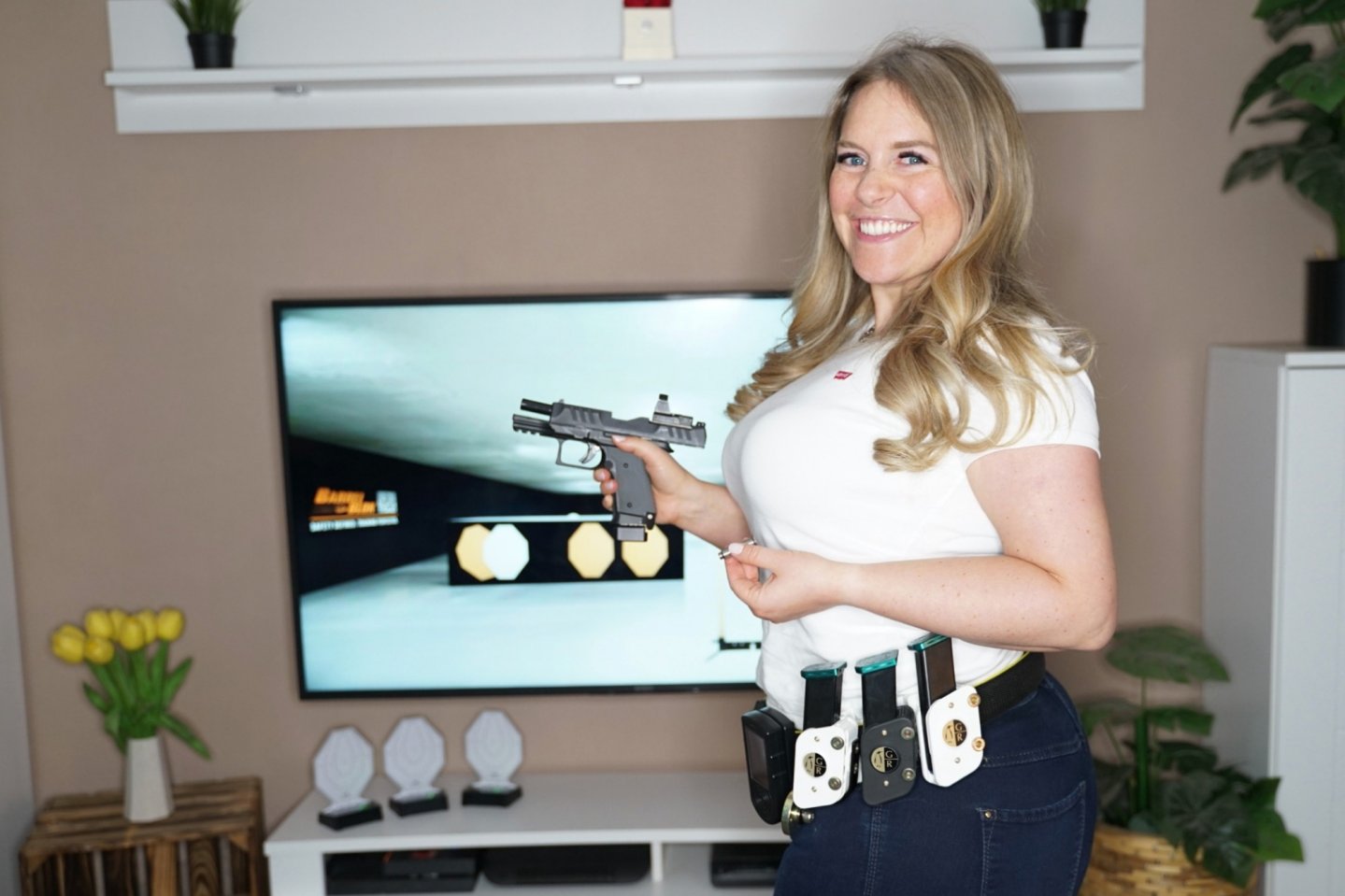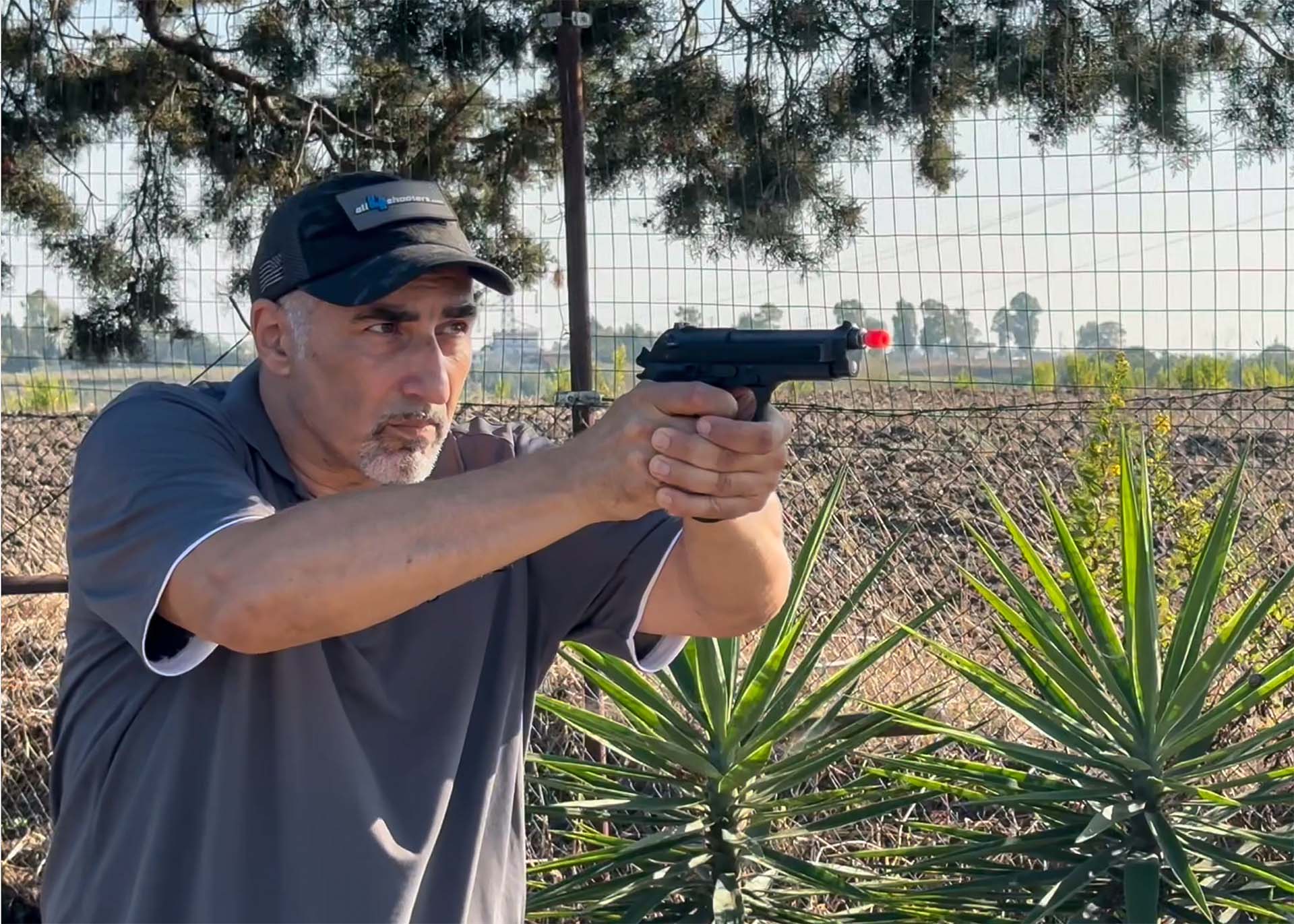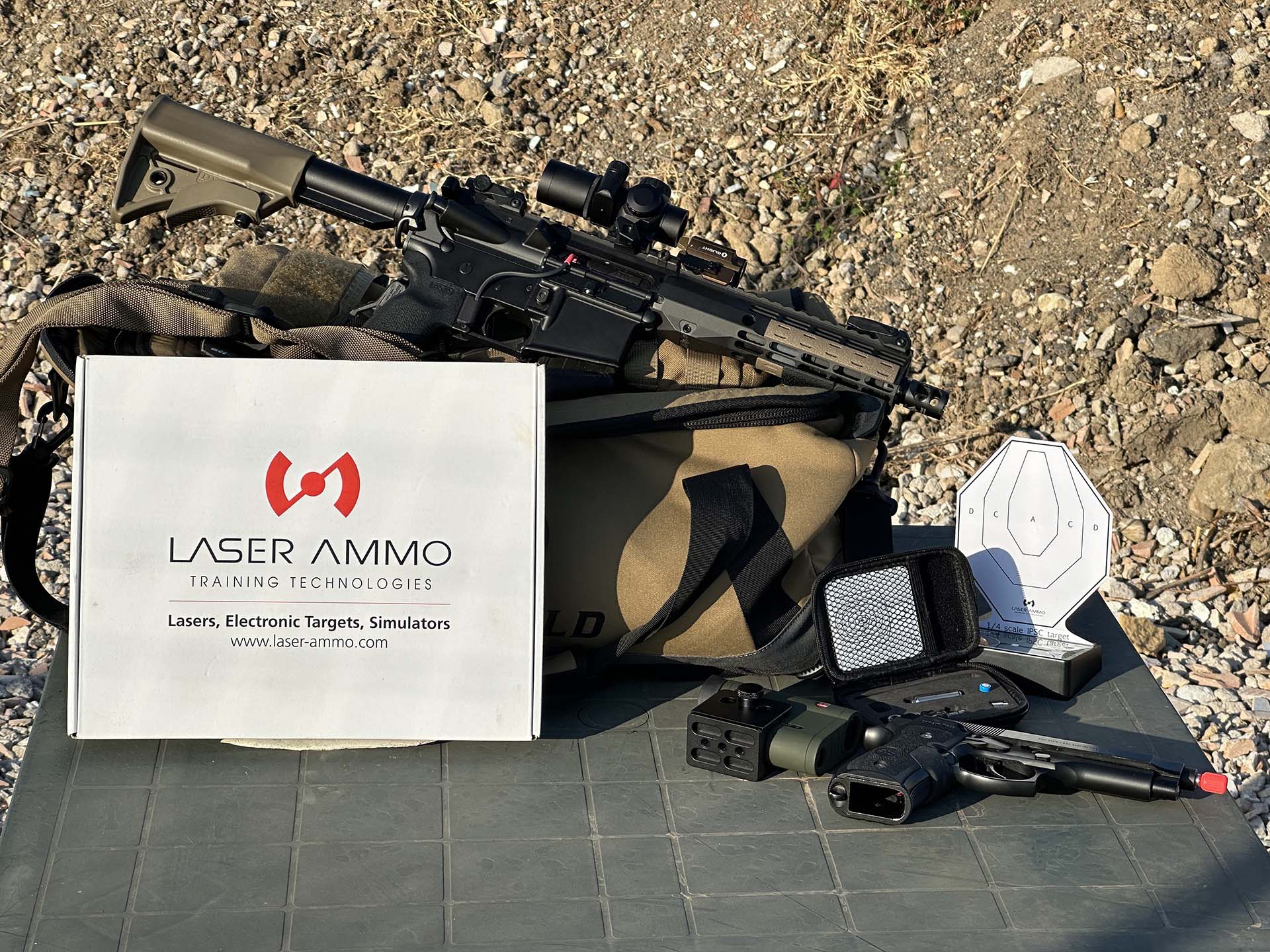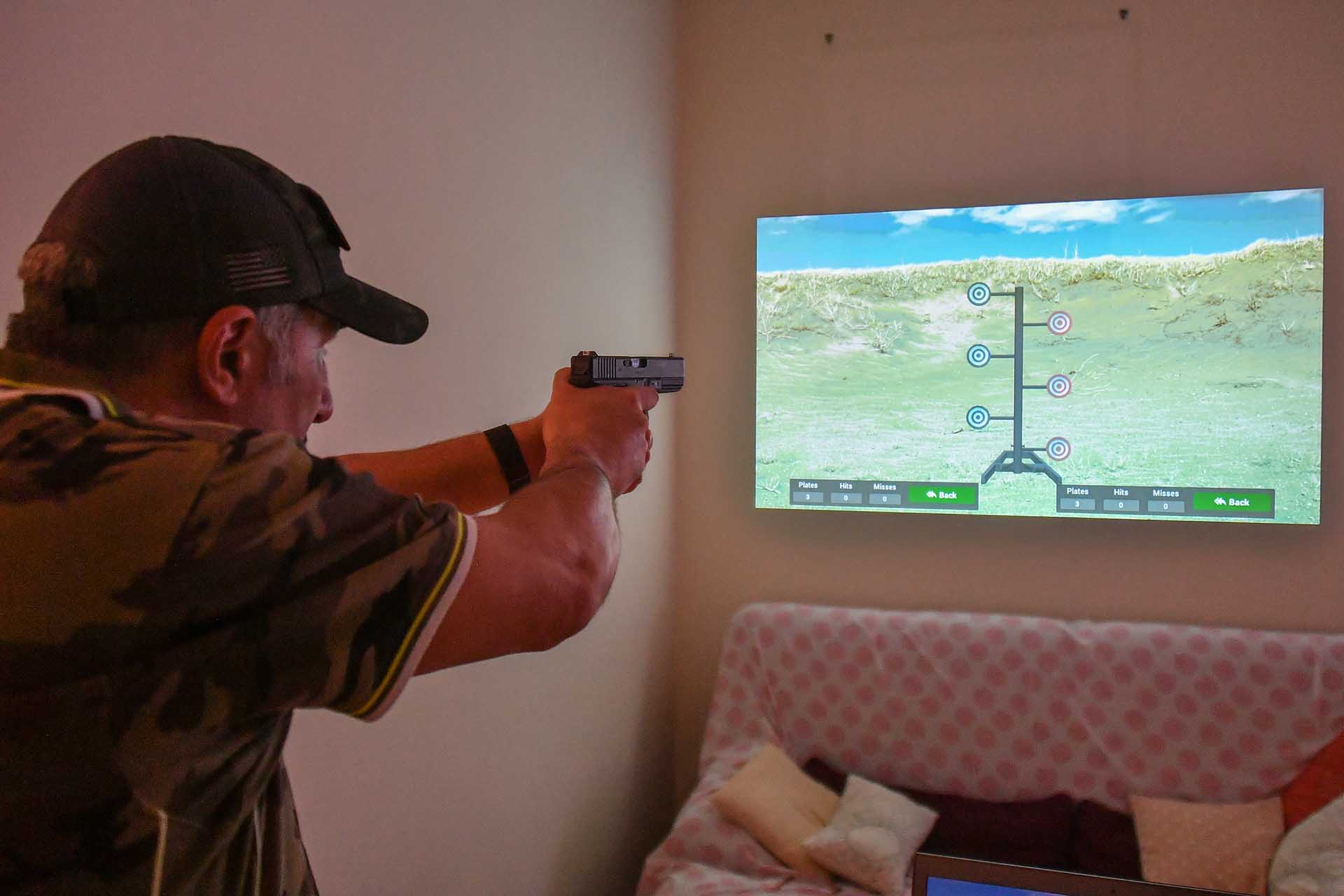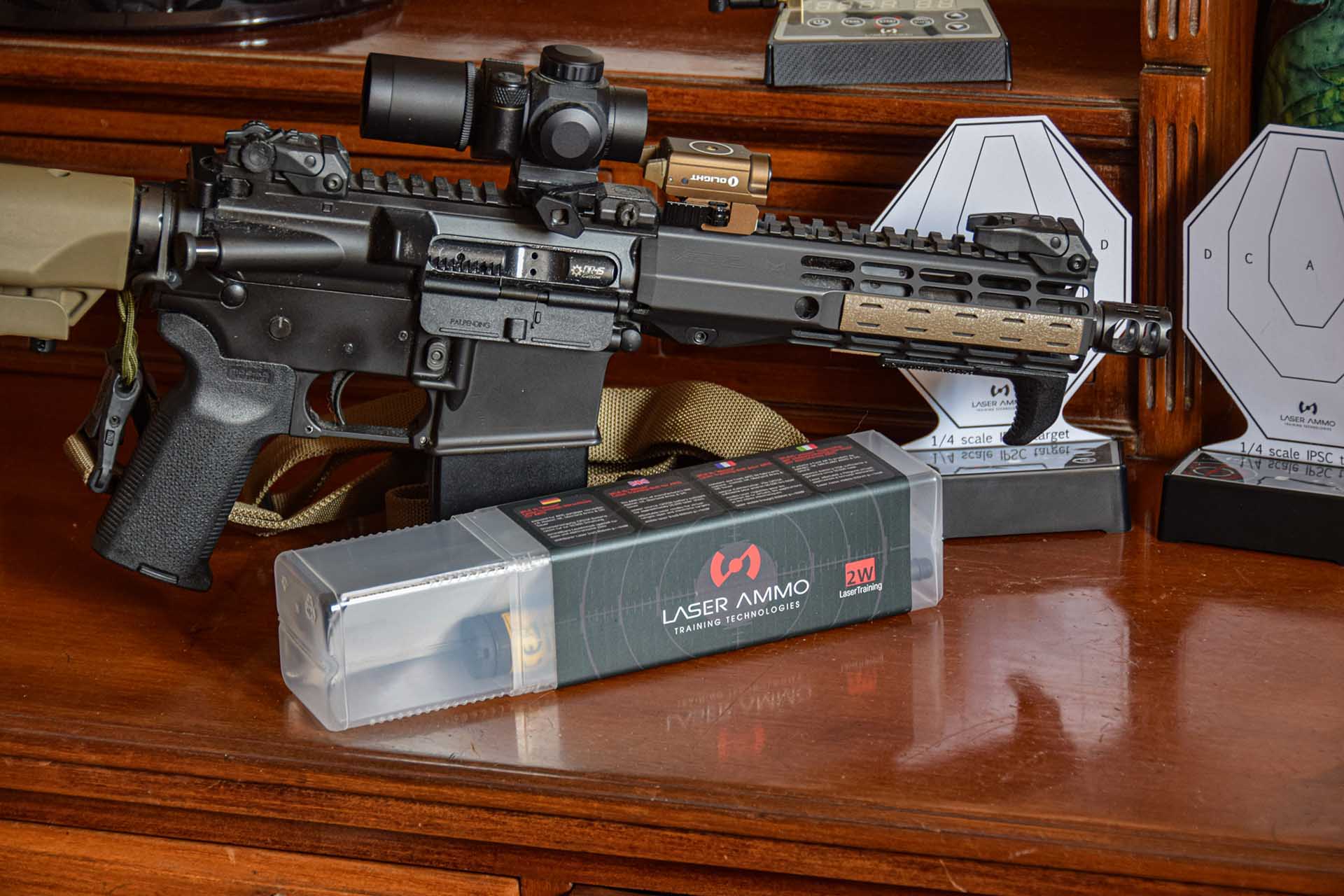Dry-fire training is an inexpensive and safe method of consolidating the basics of handling firearms and, in particular, training the movement sequences with the gun. You simulate the firing of a shot by pulling the trigger without using live ammunition. As Goethe said, "good is the intention, but the fulfillment is difficult". So that it doesn't just remain a good resolution for this year, we have a few tips for you here on how you can actively organize your shooting training at home. If you set out without a plan, dry-fire training often turns out to be half-hearted or haphazard.
A structured training programme helps to develop shooting skills
This goes beyond simply getting to know your own firearm or learning the basics. Dry-fire training should be part of any sustainable training concept. Just 15 minutes a day can help to significantly improve your skills. Taking part in competitions only tests your current level of training and has no training effect. Before we give you some tips for structured training, we would like to remind you of the general safety rules for gun handling, which of course also apply at home:
- Treat all guns as if they are always loaded
- Never let the muzzle cover anything that you are not willing to destroy
- Keep your finger off the trigger until your sights are on target
- Never point your gun at a person!
Before starting training, please check that your firearm is unloaded and that there is no live ammunition in the magazines to be used: safety always comes first! Find a suitable place at home where you can move around freely. The living room is often suitable for this. Some manufacturers, such as Laser Ammo, offer small targets for dry-fire training, which you can place in the room of your choice. However, if you don't want to spend money on targets, you can also make do with other possible targets such as sockets, light switches or randomly placed sticky notes (Post-Its). But these are only makeshift solutions. The special targets from Laser Ammo are much more useful.
Dry training with laser ammo: 4 effective exercises with your gun at home
Let's start with some basics first. Exercise 1: Trigger control. To do this, take your firearm in your hand and pull the trigger. Make sure that you are standing correctly and holding the gun firmly in your hands.
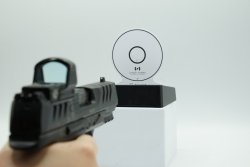
Exercise 2: Target acquisition. Acquire the target of your choice with the gun and consciously pull the trigger. Feel your finger: how did the trigger feel? When did the supposed shot break? Did the sight picture change during the shot? If using a red dot sight: did the dot move when the trigger was pulled? If the sight picture has changed, you can be sure that you may have "missed" the shot on the trigger. Repeat this exercise until you are sure that the sight picture no longer changes when the trigger is pulled. By the way: with special laser cartridges from Laser Ammo you can also see where the supposed shot would have actually hit. Laser cartridges are practice cartridges with integrated laser units that are available in various calibers. Laser Ammo also offers so-called i-MTTS targets (interactive Multi Training Targets), which react to the simulated hits and can be distributed anywhere in the home. For example, you can simulate the popular steel plate shooting or any penalty targets at home. Just the thing for IPSC shooters.
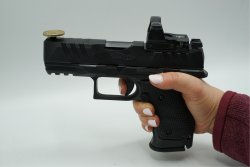
To improve your trigger control, there is another exercise that you can easily do at home: the coin trick. All you need is a coin next to your gun. Place it flat on the front sight. The coin must remain balanced while you hold the gun – pull the trigger. Any mistake when pulling the trigger will cause the coin to fall. There are also training systems that can evaluate the trigger pull electronically. Here, any trigger errors are recorded directly by position sensors and displayed via a corresponding app.
Exercise 3: Another task for dry training at home is the holster draw. We recommend using a timer that gives an acoustic start signal. However, there are also free cell phone apps such as "Shottimer" or YouTube videos that provide the start/stop signal as well as the corresponding commands. Now to the actual exercise:
- After the star signal has sounded, the still holstered gun is fully gripped with the firing hand.
- While the firing hand grasps the gun grip, the non-firing hand is moved towards the holster side.
- As soon as the firing hand has fully gripped the gun, pull it out of the holster and bring it to the ready.
- When the gun is brought to the ready position, the non-firing hand is brought to the gun and completes the two-hand grip.
- When the gun is at eye level, the trigger pull process is started and the shot is fired as soon as you are ready.
To get a better feel for the process just described, we recommend practicing the drawing drill in reverse order during dry-fire training. This means that instead of starting with the gun holstered, you start with the gun at the ready and then holster it again.
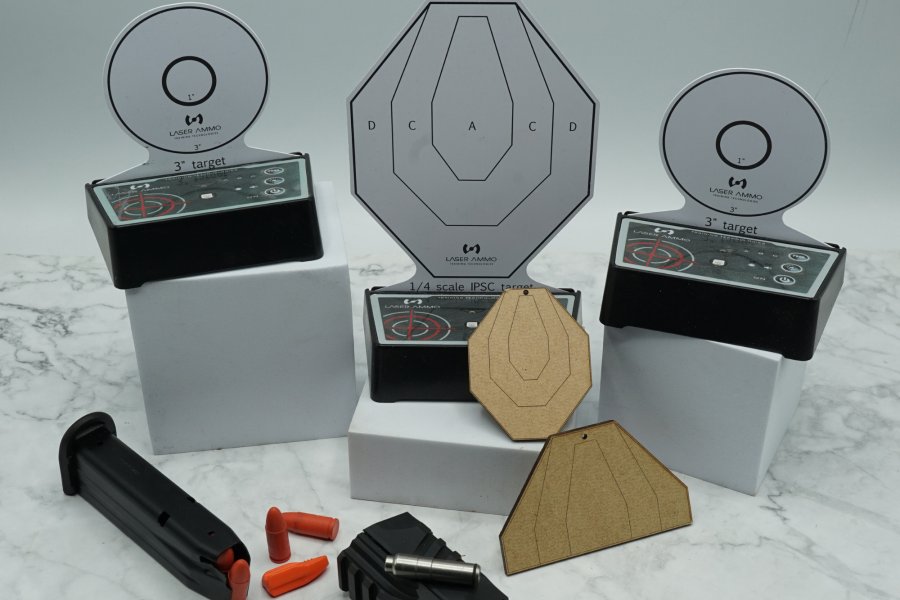
Exercise 4: magazine change. This also needs to be practiced – and there are several variants for this. The simplest variant is to press the magazine release button after firing a simulated shot. As soon as the "old" magazine has fallen out, the "new" magazine must be inserted into the gun accordingly. The slide must be racked again so that a new round can be fired. Another variant is that the gun without a magazine is first drawn from the holster after an acoustic signal sounds and loaded with a magazine lying on the table in front of the shooter and then the slide is racked. A shot can then be simulated again, for example. Don't worry – practice makes perfect here too. Don't bury your head in the sand if the magazines fall out of your hand every now and then or the insertion doesn't go smoothly straight away. These exercises help you to internalize the movement sequences and to be faster in handling the gun in any competitions thanks to the routine you have learned.
There are free dry-fire training courses on YouTube, for example from Dryfireking. Various exercises or so-called stages are simulated here, which you then have to complete – depending on the video – one-handed with your right or left hand. For an extra charge of around €3 per month, you can also get access to the Pro version, which gives you access to even more practice simulations that sometimes require you to change magazines or positions. A practice session usually lasts 10 to 15 minutes and any number of practice sessions can be completed in succession. Training helps shooters with red dot sights in particular to find the "dot" more quickly and avoid unnecessary "stirring around". There are no limits to imagination here – the videos can be combined with additional targets (or Post-Its) on the TV or a projector. If you don't want to have to keep cycling your gun after simulated firing, you can avoid this with various technical aids such as the Coolfire Trainer or the Dry Fire Reset Trigger (from Laser Ammo, which is currently only available for GLOCK models). Here, the slide itself is driven by CO2 during repeating or the reset of the trigger is simply simulated.
Professional dry-fire training systems such as the Smokeless Range from Laser Ammo increase the shooter's learning curve in the long term
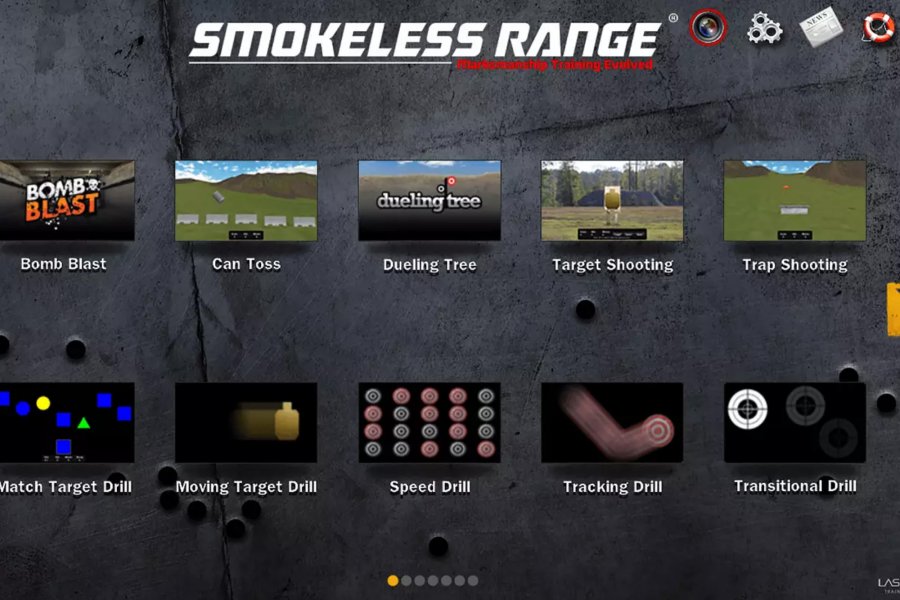
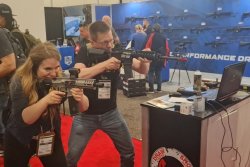
If you want to take your dry-fire training to a higher level, you can use professional training systems such as the Smokeless Range from Laser Ammo. This is a home simulator similar to a laser shooting cinema. The modular system is individually customizable. The basic package includes a camera, a tripod and the software license for the basic software. This includes 10 drills (Tracking Drill, Transitional Drill, Speed Drill, Can Toss, Bomb Blast, Trap Shooting, Dueling Tree, Moving Target, Match Target Drill and Target Shooting). There is also an IPSC extension, which includes ready-made shooting stages in various difficulty levels or the so-called Open Range. This is a customizable shooting range simulation with freely placeable targets. Our editorial colleagues Marijan and Tanja Loch were already able to try out the Smokeless Range from Laser Ammo in combination with Coolfire at the SHOT Show 2023 and were more than impressed, while our colleague Franco Palamaro already had the opportunity to take a close look at this dry training system at home: here you can find his all4shooters,com test report on the Laser Ammo Smokeless Range.
Our final tip: keep a training diary. This is where you should record what you have learned. You should then put these skills to the test at regular intervals on the shooting range. For example, how does your finger behave on the trigger when firing a real shot? Do you need to make further adjustments to get a better trigger feel? Can you find your sight picture more quickly? How successful are magazine changes? You should also reflect on all of this after training in live fire and continue to improve it in dry practice at home. The aim is always to improve your shooting skills. So it's not about being good at dry-fire training, but about learning the necessary tools that will make you a better shooter. Rest assured: there is always room for improvement! So keep at it and turn your New Year's resolution into a firm habit.
You can find out more on the Laser Ammo website, where you can also purchase their products directly.


